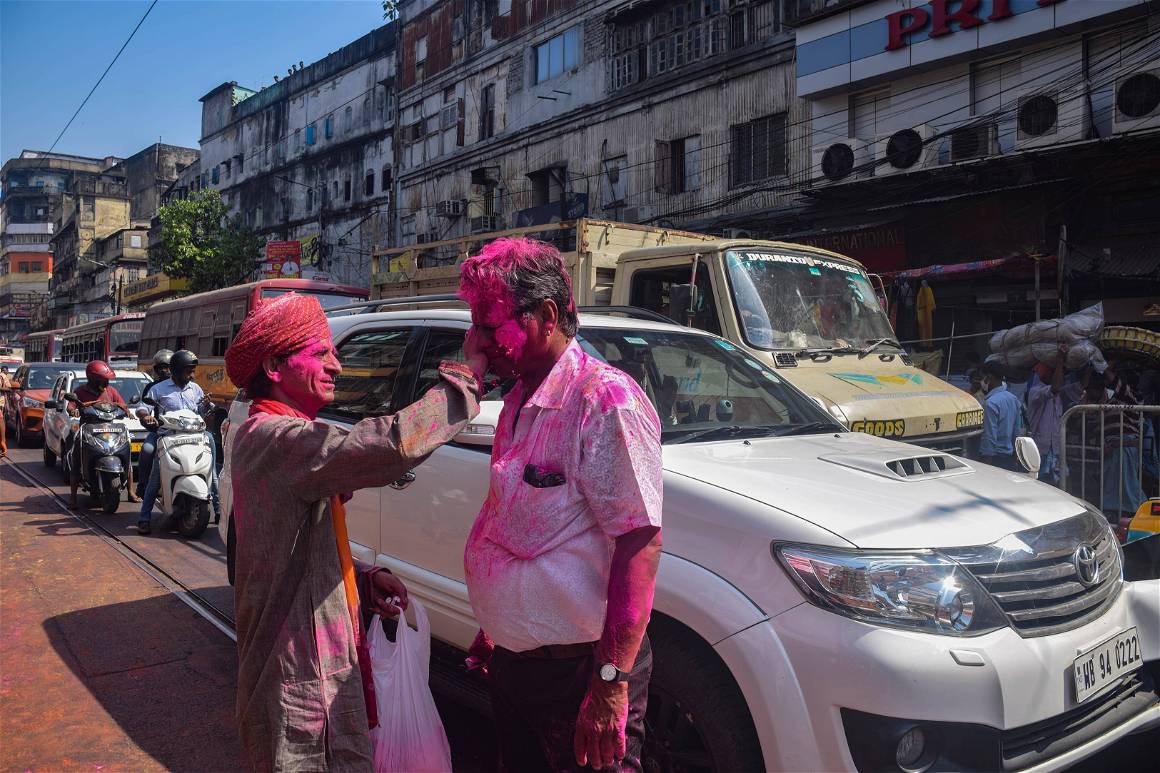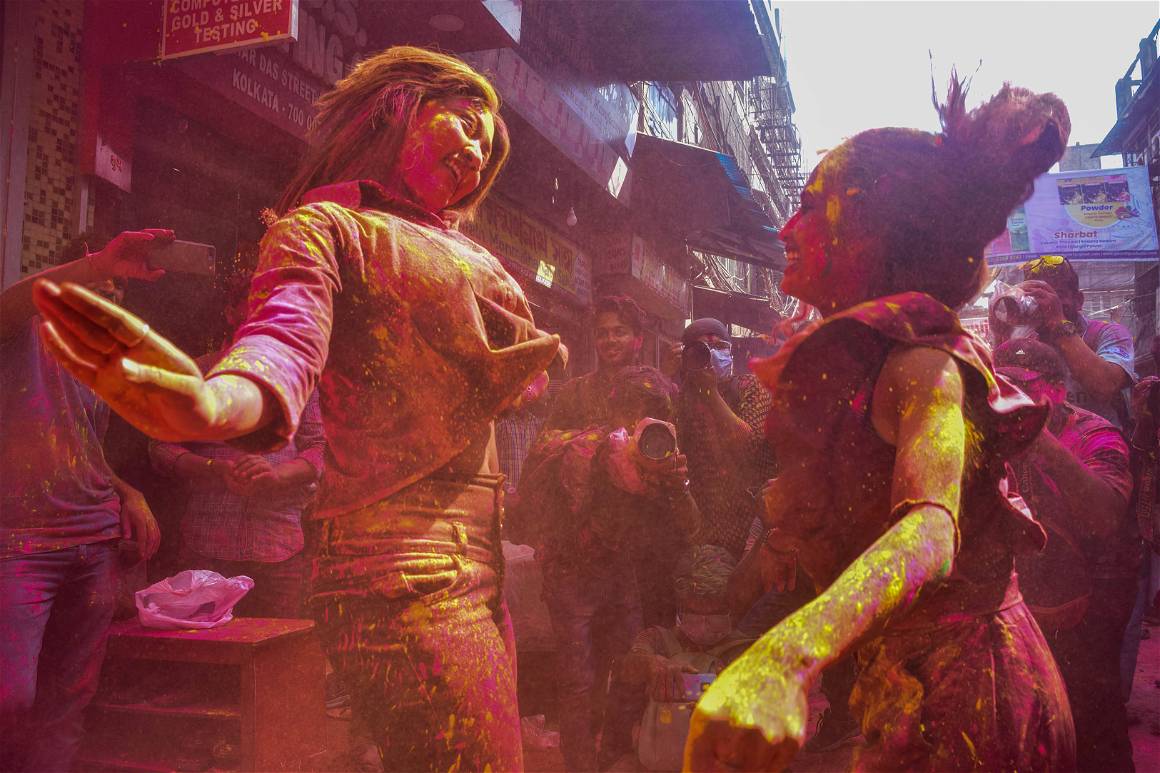Tamal Shee’s approach to photographing the Holi Festival in India is rooted in his relationship with the people - his candid shots show Kolkata's streets in colour. IMAGO spoke to him about his methods and the popular Hindu tradition.
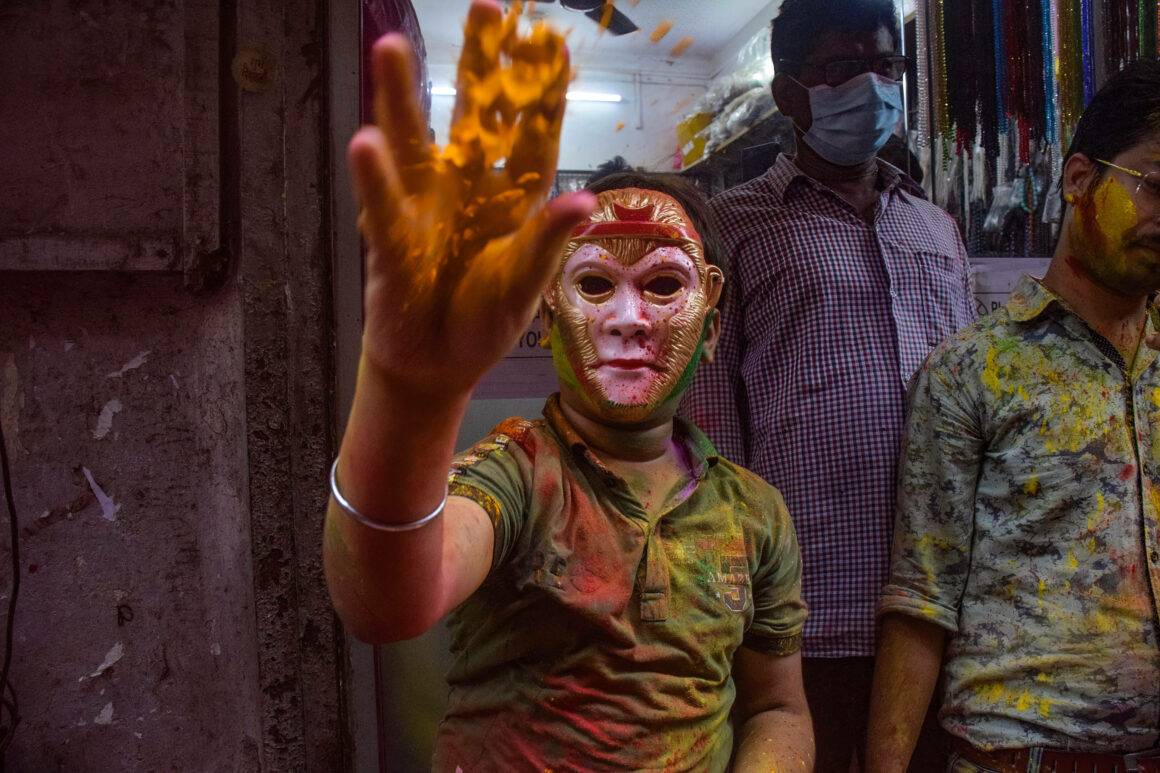
Behind Holi – Streets in Colour. An Interview with Tamal Shee.
Tamal Shee from IMAGO’s partner Zuma, is a street photographer based in Kolkata, India with a dedication to immersing into his community to capture it most authentically. For our series Colour, Candid and the Street, IMAGO spoke to him to find out more about his photos and the world-famous Holi Festival celebrating colours and the arrival of Spring, with a long history in Hinduism that transcends age, gender or caste.
“Until and unless we become able to be a part of the community that we are photographing, people keep regarding us as outsiders.”
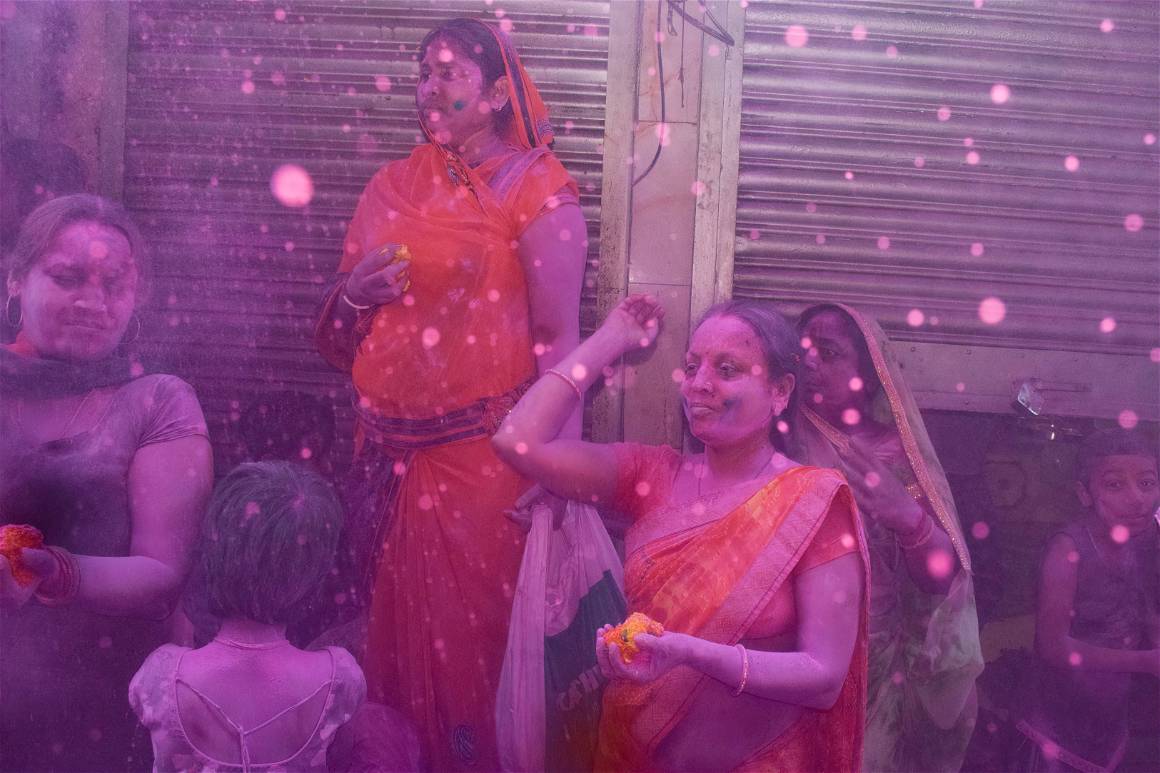
Our topic for August is Colour, Candid and the Street, so your photos from Holi were only fitting. Can you please tell us a bit about yourself, your journey to photography, and what you’re currently working on?
I am passionate about photojournalism, street photography and photo stories and am working in these three core areas of photography.
Every beginning has a story itself – I didn’t start photography with a plan. In mid 2018, I went through something difficult in my last year of my academic studies. At that time I decided to do something creative which could relax my mind and I decided to start capturing photos randomly as I always loved photographs. So, I started with a mobile camera and after buying a DSLR camera, I started learning and understanding photography from different sources, especially from the many street photographers in Kolkata. They kept inspiring me from the beginning and within a couple of months, I felt that I had fallen in love with photography. At the beginning, I tried to capture different types of photos but later on I focused on street photography as well as photojournalism.
I have been working as a freelance photojournalist since 2019. Apart from freelance photography, personally I am working on many projects such as climate change, gender bias and the effects of political riots in India.
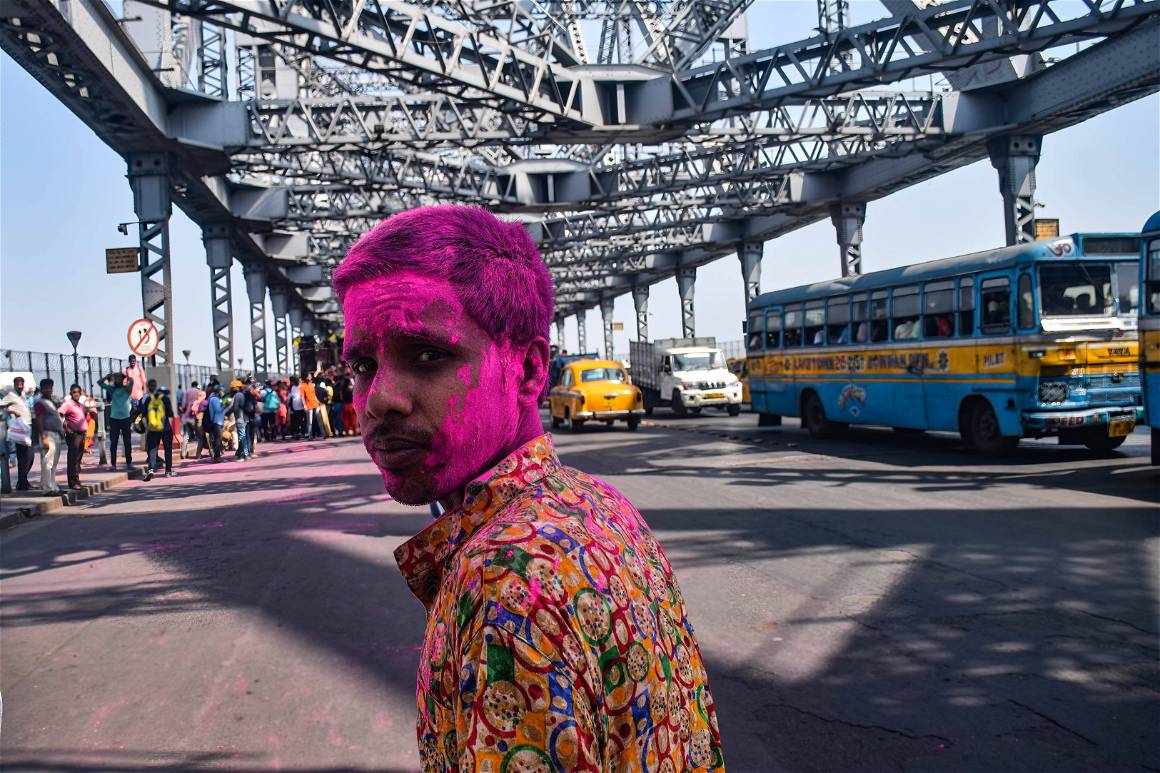
Aside from the bright colours, your shots from the Holi festival show a strong human element. Can you paint us a picture of the atmosphere in the streets on the day of Holi? How do you approach photographing people in a situation overrun by colours and chaos?
Holi is the festival of colours, celebrated in every part of India with a lot of enthusiasm and has a deep connection with Hindu mythology. People, regardless of religion, caste and age celebrate Holi and everyone tries to make their loved ones colourful as it is a festival of soul, love and friendship.
In Kolkata, the festival is celebrated in two parts with colour powder (Abir), and with watercolour. Capturing photographs during Holi in Kolkata is very challenging because a huge number of people take part and every corner, every road, house and narrow lane turns into a colourful painting with the ‘Abir.’ People stand on either side of the road to exchange good wishes and the colours remain everywhere, even in the air.
When it comes to my approach to photographing people in a situation overrun by colours and chaos, I try to become a member of the community in every event that I have covered so far, and take part wholeheartedly. Every time I feel the community as my community, my people, my festival, my celebration. This draws people close to me emotionally and physically. Until and unless we become able to be a part of the community that we are photographing, people keep regarding us as outsiders. So to connect with the community, sometimes I approach the people and provoke them to throw colour powder at me – or I dance, sing, and enjoy the festival in every possible manner.
Often people fail to express their natural feelings and behaviour [when there is a camera], so to make them feel at home, we need to take part and enjoy the ceremony to get close to them and to build up a connection. So before clicking a single shot, I try to be a member of the community. Once I get connected things become easy.
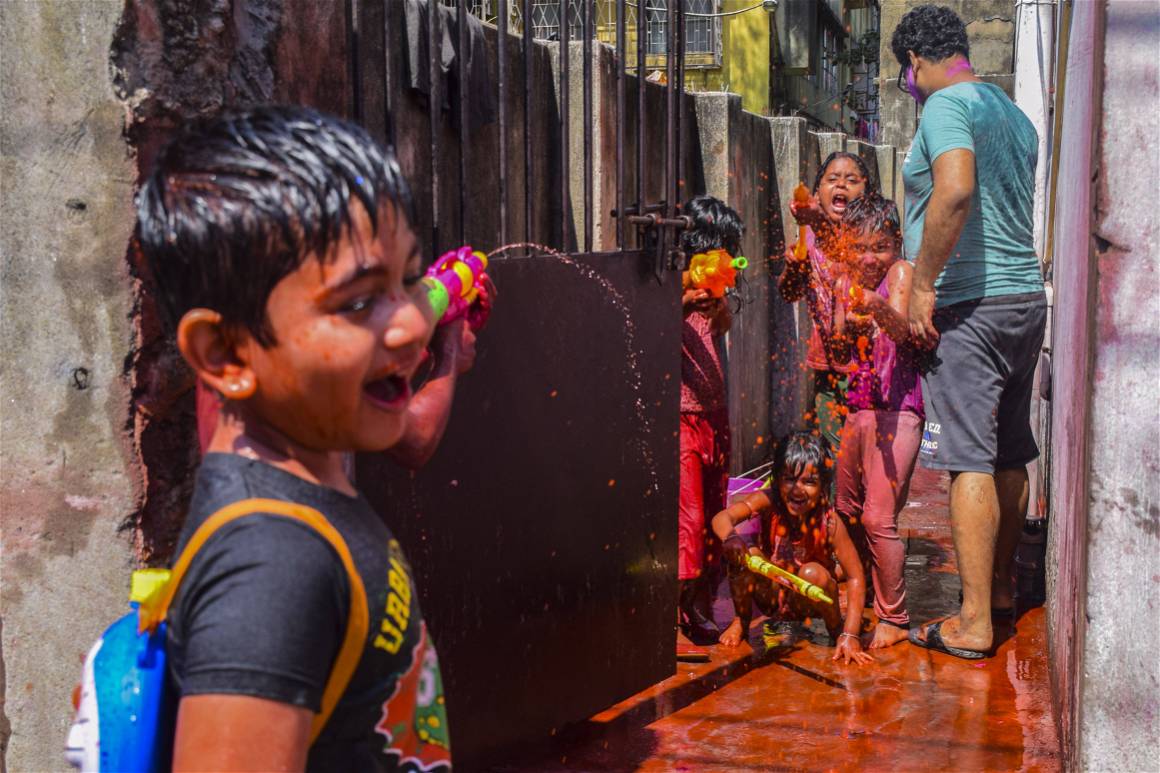

I am curious about the technicalities you need to consider when shooting at Holi. What aesthetic challenges do you face regarding the overload of colour and how do you avoid damage to your camera?
As you know, there’s a lot of colour powder so extra care needs to be taken. I usually wrap the camera with visible plastic just to keep it out of the powder, dust and water – but no precaution is enough to shoot during Holi. Some situations provoke us to click and we forget everything about the inherent damages to the gear. Despite all these precautions, the gear always ends up coming in contact with the dust and water.
Anyhow, as I protect the camera, I need to keep the lens fixed and seldom can I zoom the lens. I just keep control of the shutter speed, aperture and ISO with a special key in my gear. But if the situation demands, I need to change settings. So much is going on around me, that sometimes I need to click without keeping my eye on the viewfinder. Sometimes it doesn’t work and most of the time it works, as it is a result of practice.
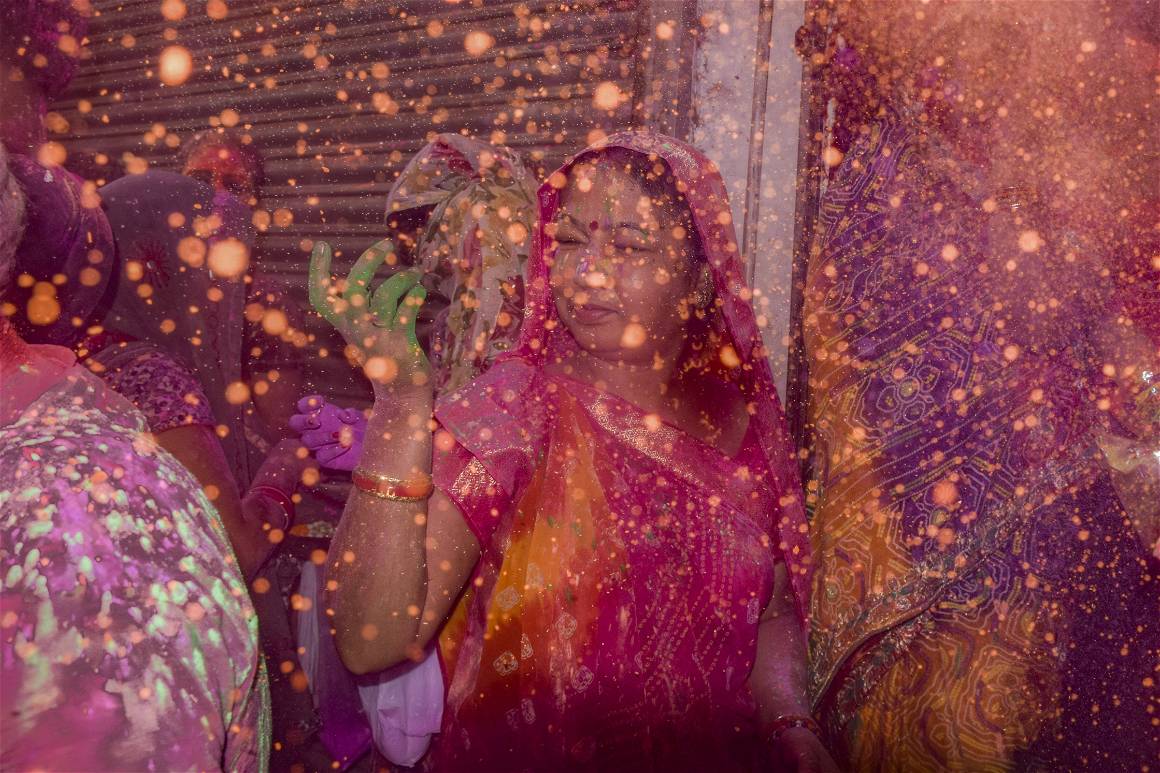
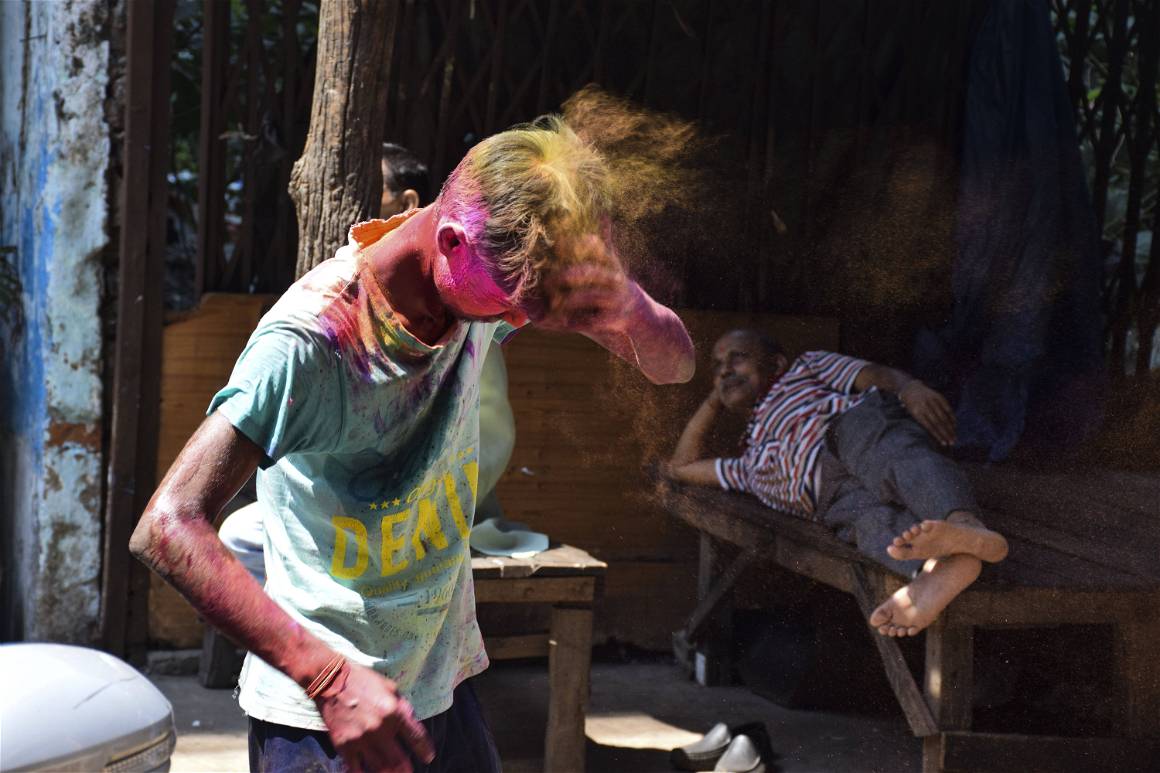
Holi is about welcoming Spring and is celebrated world-wide, but I am hoping you can tell us a bit more about the holiday. How important is Holi and what role does it play in Hinduism compared to other festivals?
The Holi festival in India is the festival of colours and a celebration of the victory of good over evil, the destruction of the demoness Holika, the sister of the demon Hiranyakashayap. It is celebrated every year on the day after the full moon in the Hindu month of Phalguna in early March. People celebrate the start of Spring and other events in the Hindu religion; they march the streets and spray people with ‘Abir’ while dancing and singing.
It is believed that Hiranyakashayap was the ruler of the universe and also superior to all gods. However, Hiranyakashayap’s son Prahlad went against his mother by following Lord Vishnu. This left his father with no choice but to collaborate with Holika to kill him. Hiranyakashipu challenged Prahlad to sit on a pyre with Holika who was to be immune to fire. When the fire started, Holika was burned to death whereas Prahlad survived without a scar and escaped his fate with the saving hand of Vishnu. But later on, Vishnu killed Prahlad and his mother and became King. The burning of Holika is celebrated as Holi, and the moral behind the story is that good always wins over evil. There are other Hindu traditions that are linked to this legend. For instance, Shaivism and Shaktism, where goddess Parvati awaits to bring back Shiva into the world while seeking help from the Hindu god of love, Kamadeva and Vasant Panchami.
The name ‘festival of colours’ came from Lord Krishna’s childhood antics. Lord Krishna was a reincarnation of the Lord Vishnu, who enjoyed playing pranks on girls from the village by drenching them in water and smearing them with colours. Although Holi is a Hindu festival, it is popular among non-Hindus.


What are some other traditions that come with Holi, aside from the parade and the colours? What relationship do you have with this festival personally?
The event lasts for a night and a day, starting on the evening of the full moon (Purnima). Holika Dahan, the burning of demon Holika, happens on the first evening and people gather, perform religious rituals on a bonfire and pray that the evil inside them is destroyed the way Holika was killed in the fire. The next morning people start the real carnival traditions and smear each other with the ‘Abir’ – they sometimes use water guns and water-filled balloons for more fun and sometimes ‘Vang’ is mixed into milkshakes. Groups of people march the streets with drums and other instruments, singing and dancing. People also gather with their families and friends to colour each other and share Holi delicacies.
Holi has a huge cultural significance in Hindu culture. It opens a new beginning from past errors, serving as the end of the conflict, and also a day when people forget and forgive. In most cases, people pay their debt and also forgive debts embracing new opportunities in their lives.
There are three steps to the Holi celebration. Before the festival, people often gather wood and combustible material to light bonfires in parks, community centres and open spaces. Preparation also involves stocking homes with food, party drinks and festive foods like mathri, malpuas and gujiya and more.
Then on the eve of Holi, the pyre is lit to signify the Holika Dahan. And then, the colours. Traditionally washable natural colour is the best for this occasion, some include dhak, kumkum, turmeric, and neemm but water-based commercial pigments work as well. Holi in India is largely celebrated in West Bengal, Uttar Pradesh, Rajasthan, Maharashtra and Odisha.
As an Indian I have celebrated this festival every year since my childhood and enjoy it a lot with my friends and family, so this festival is automatically connected with me which especially helps me to photograph it.

